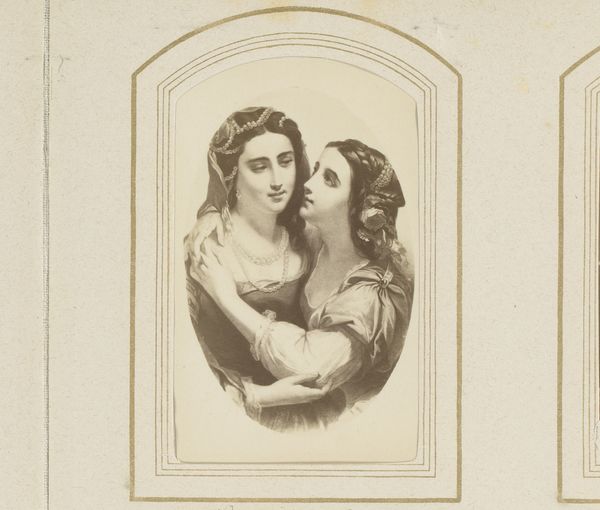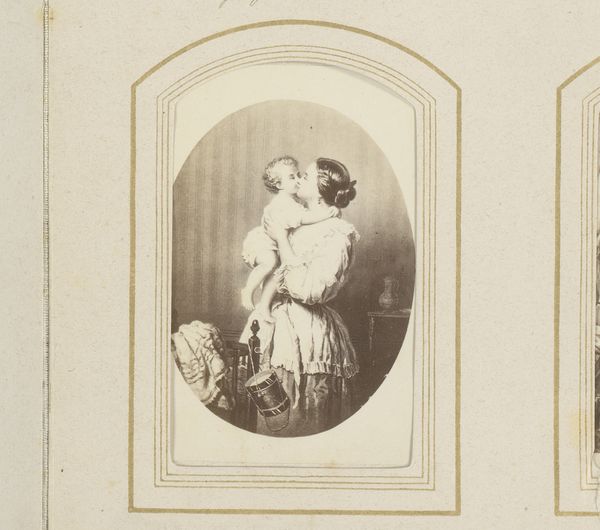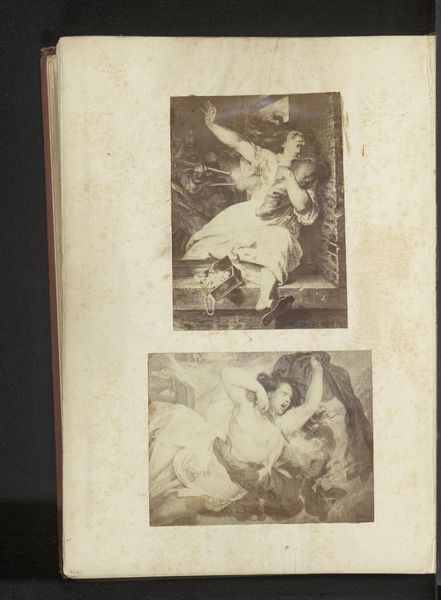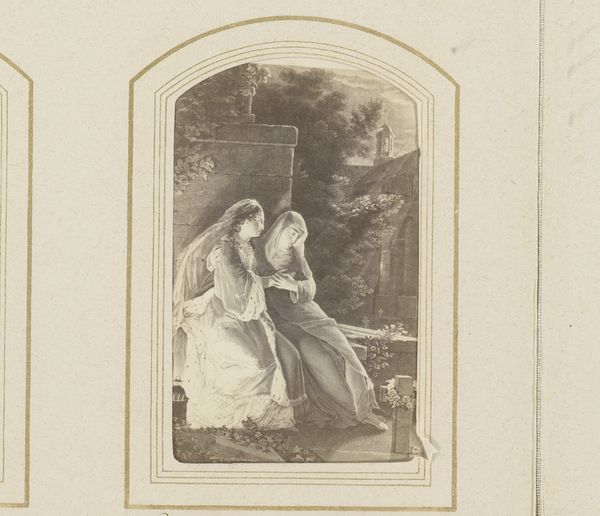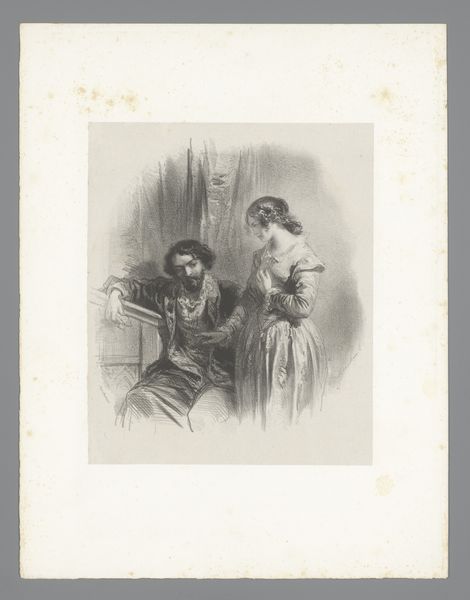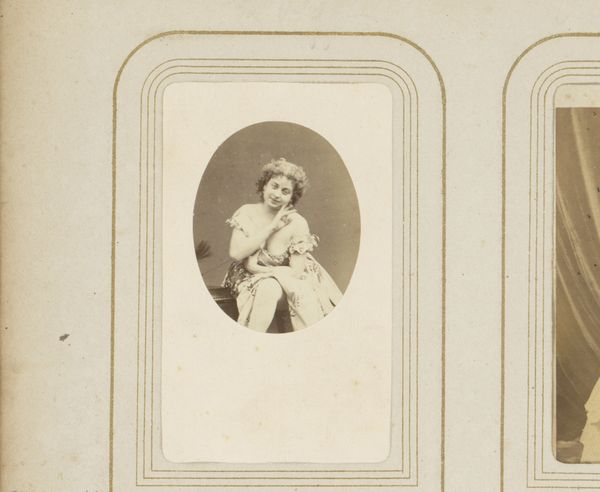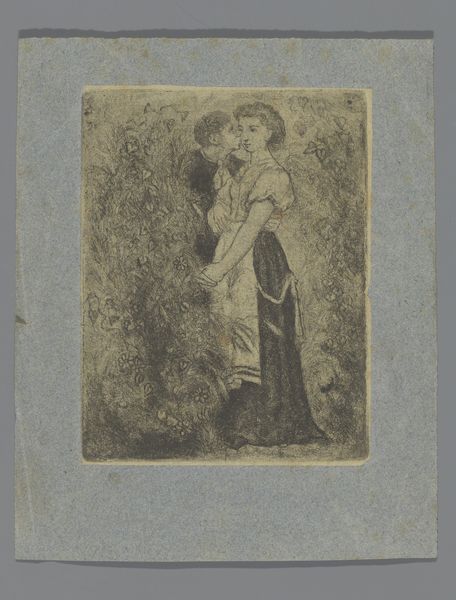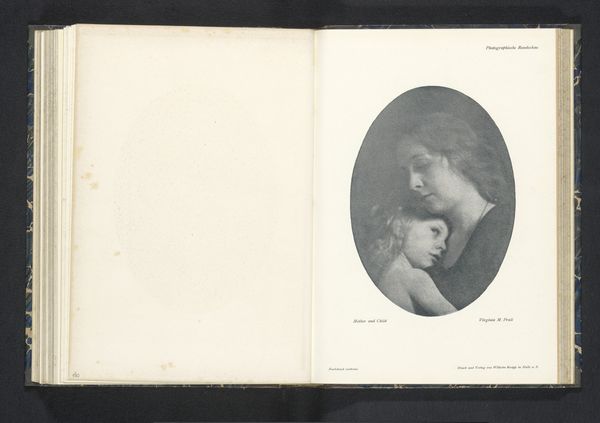
photography
#
photography
#
genre-painting
#
realism
Dimensions: height 84 mm, width 51 mm
Copyright: Rijks Museum: Open Domain
Curator: Up next, we have an intriguing piece titled “Fotoreproductie van Die beiden Gretchen,” created by an anonymous photographer sometime between 1870 and 1890. Editor: It’s quite charming, isn’t it? The sepia tone gives it a romantic, almost ethereal quality. I wonder who these women were and what their relationship was to each other. Curator: I'm drawn to its photographic nature and the reproduction of form in what seems like an engagement with realism through the lens. Considering photography’s emergent role then, how might its accessibility shape representations, not just of bourgeois society, but also ideas circulating about gender and desire? Editor: That's a vital point! Because looking at the women—are they sisters, lovers, performers? The image is saturated with all these implications, isn't it? How do such pictures challenge or perpetuate accepted norms of female representation during the late 19th century? It appears at once intimate, almost private, yet simultaneously staged for a public gaze. Curator: Precisely. The very process of making such images – the materials, the labor in the darkroom, the mechanisms behind popular portraiture – often gets glossed over. The surface allure can blind us to the photographic craftsmanship. What's key is to contextualize the role that mass media and the popular dissemination of reproducible art occupied at that time. The production line behind these "snapshots" offers another equally informative aspect of exploration. Editor: Exactly! Also, I'm considering the setting – or rather, lack of it. Is that just happenstance due to constraints or technique, or an intentional move away from class or cultural cues meant to draw specific reactions and interpretations by targeted viewers? We may never have the specifics, but that, in itself, suggests questions we need to ask when grappling with this period of genre painting meeting early photographic efforts. Curator: Indeed. Examining photographic process within a frame encourages more informed interpretations about social constructions and expressions regarding class, intimacy, or identity during a pivotal juncture for visual culture. Editor: Right—there's so much more here than what initially seems captured, doesn’t it? Curator: Definitely! The materials through which "Die beiden Gretchen" emerged provide powerful tools to probe assumptions while unpacking visual histories.
Comments
No comments
Be the first to comment and join the conversation on the ultimate creative platform.
